-
Product Name
IFI16 Polyclonal Antibody
- Documents
-
Description
Polyclonal antibody to IFI16
-
Tested applications
WB, IHC
-
Species reactivity
Human, Mouse, Rat
-
Alternative names
IFI16 antibody; IFNGIP1 antibody; PYHIN2 antibody; gamma-interferon-inducible protein 16 antibody
-
Isotype
Rabbit IgG
-
Preparation
Antigen: Recombinant fusion protein containing a sequence corresponding to amino acids 1-300 of human IFI16 (NP_005522.2).
-
Clonality
Polyclonal
-
Formulation
PBS with 0.02% sodium azide, 50% glycerol, pH7.3.
-
Storage instructions
Store at -20℃. Avoid freeze / thaw cycles.
-
Applications
WB 1:500 - 1:2000
IHC 1:50 - 1:200 -
Validations
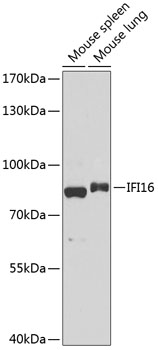
Western blot - IFI16 Polyclonal Antibody
Western blot analysis of extracts of various cell lines, using IFI16 antibody at 1:1000 dilution.Secondary antibody: HRP Goat Anti-Rabbit IgG (H+L) at 1:10000 dilution.Lysates/proteins: 25ug per lane.Blocking buffer: 3% nonfat dry milk in TBST.Detection: ECL Basic Kit .Exposure time: 90s.
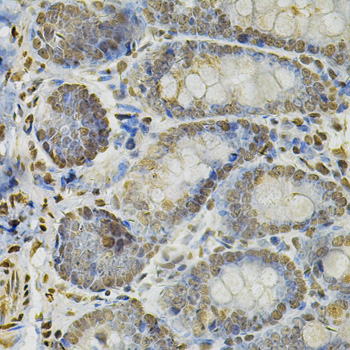
Immunohistochemistry - IFI16 Polyclonal Antibody
Immunohistochemistry of paraffin-embedded rat intestine using IFI16 Antibody at dilution of 1:100 (40x lens).

Immunohistochemistry - IFI16 Polyclonal Antibody
Immunohistochemistry of paraffin-embedded rat lung using IFI16 Antibody at dilution of 1:100 (40x lens).
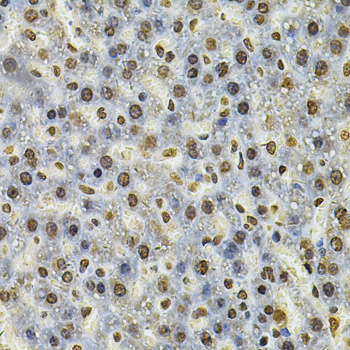
Immunohistochemistry - IFI16 Polyclonal Antibody
Immunohistochemistry of paraffin-embedded rat liver using IFI16 Antibody at dilution of 1:100 (40x lens).
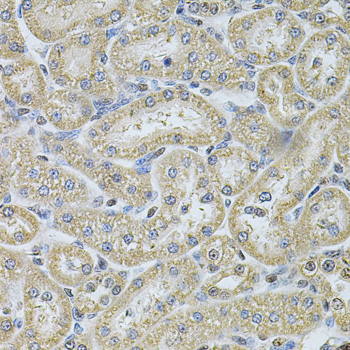
Immunohistochemistry - IFI16 Polyclonal Antibody
Immunohistochemistry of paraffin-embedded rat kidney using IFI16 Antibody at dilution of 1:100 (40x lens).
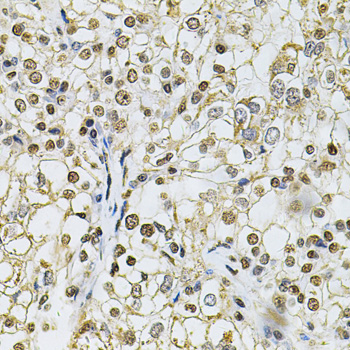
Immunohistochemistry - IFI16 Polyclonal Antibody
Immunohistochemistry of paraffin-embedded human kidney cancer using IFI16 Antibody at dilution of 1:100 (40x lens).
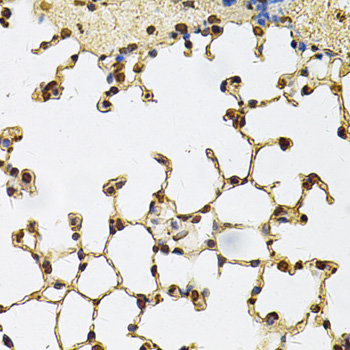
Immunohistochemistry - IFI16 Polyclonal Antibody
Immunohistochemistry of paraffin-embedded mouse lung using IFI16 Antibody at dilution of 1:100 (40x lens).
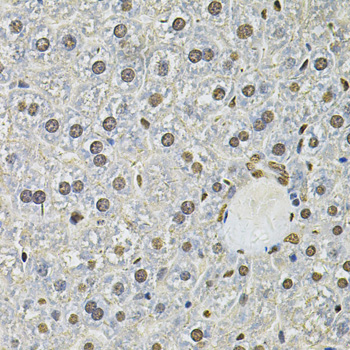
Immunohistochemistry - IFI16 Polyclonal Antibody
Immunohistochemistry of paraffin-embedded mouse liver using IFI16 Antibody at dilution of 1:100 (40x lens).

Immunohistochemistry - IFI16 Polyclonal Antibody
Immunohistochemistry of paraffin-embedded mouse kidney using IFI16 Antibody at dilution of 1:100 (40x lens).
-
Background
Binds double-stranded DNA. Binds preferentially to supercoiled DNA and cruciform DNA structures. Seems to be involved in transcriptional regulation. May function as a transcriptional repressor. Could have a role in the regulation of hematopoietic differentiation through activation of unknown target genes. Controls cellular proliferation by modulating the functions of cell cycle regulatory factors including p53/TP53 and the retinoblastoma protein. May be involved in TP53-mediated transcriptional activation by enhancing TP53 sequence-specific DNA binding and modulating TP53 phosphorylation status. Seems to be involved in energy-level-dependent activation of the ATM/ AMPK/TP53 pathway coupled to regulation of autophagy. May be involved in regulation of TP53-mediated cell death also involving BRCA1. May be involved in the senescence of prostate epithelial cells. Involved in innate immune response by recognizing viral dsDNA in the cytosol and probably in the nucleus. After binding to viral DNA in the cytoplasm recruits TMEM173/STING and mediates the induction of IFN-beta. Has anti-inflammatory activity and inhibits the activation of the AIM2 inflammasome, probably via association with AIM2. Proposed to bind viral DNA in the nucleus, such as of Kaposi's sarcoma-associated herpesvirus, and to induce the formation of nuclear caspase-1-activating inflammasome formation via association with PYCARD. Inhibits replication of herpesviruses such as human cytomegalovirus (HCMV) probably by interfering with promoter recruitment of members of the Sp1 family of transcription factors. Necessary to activate the IRF3 signaling cascade during human herpes simplex virus 1 (HHV-1) infection and promotes the assembly of heterochromatin on herpesviral DNA and inhibition of viral immediate-early gene expression and replication. Involved in the MTA1-mediated epigenetic regulation of ESR1 expression in breast cancer.
Related Products / Services
Please note: All products are "FOR RESEARCH USE ONLY AND ARE NOT INTENDED FOR DIAGNOSTIC OR THERAPEUTIC USE"
